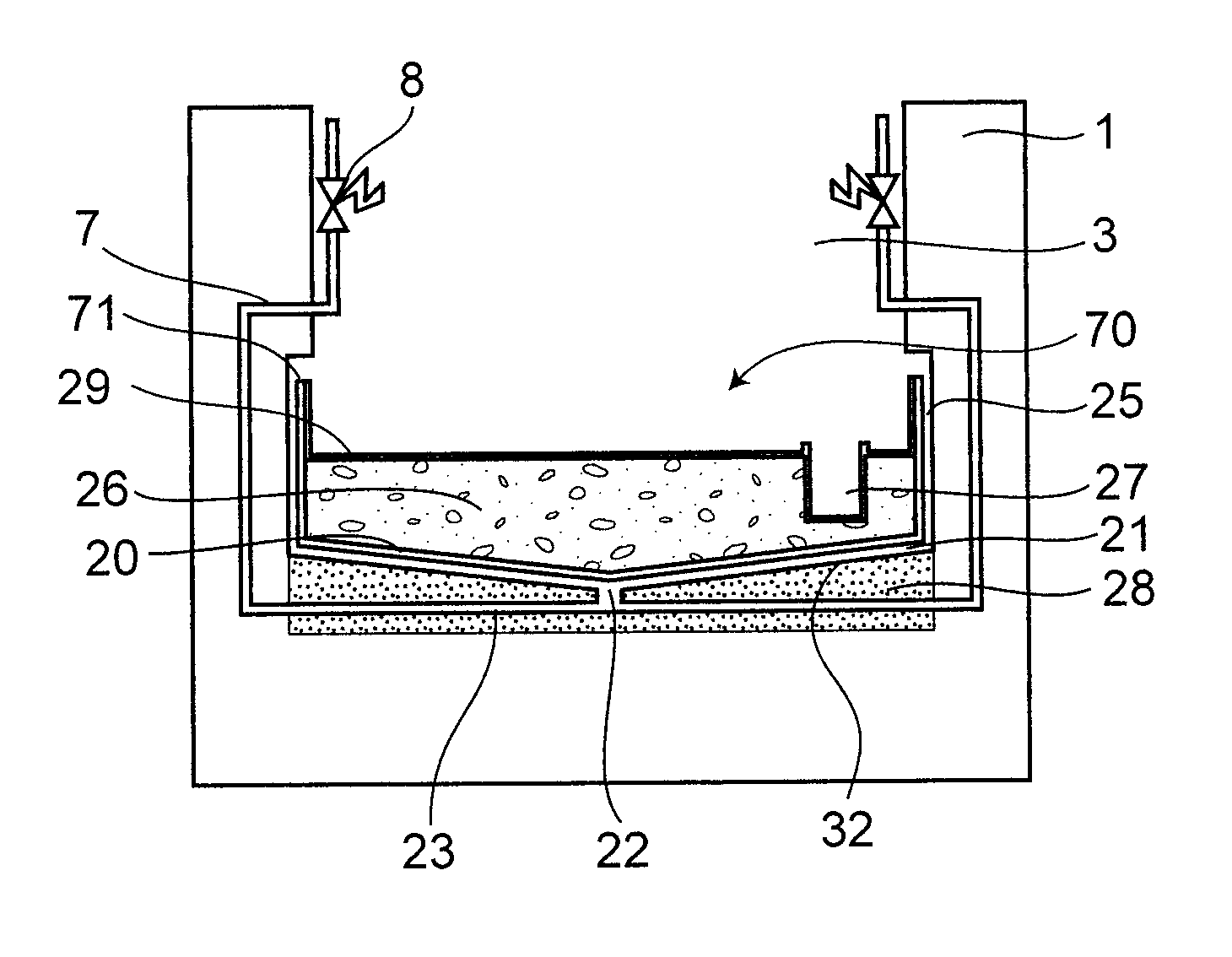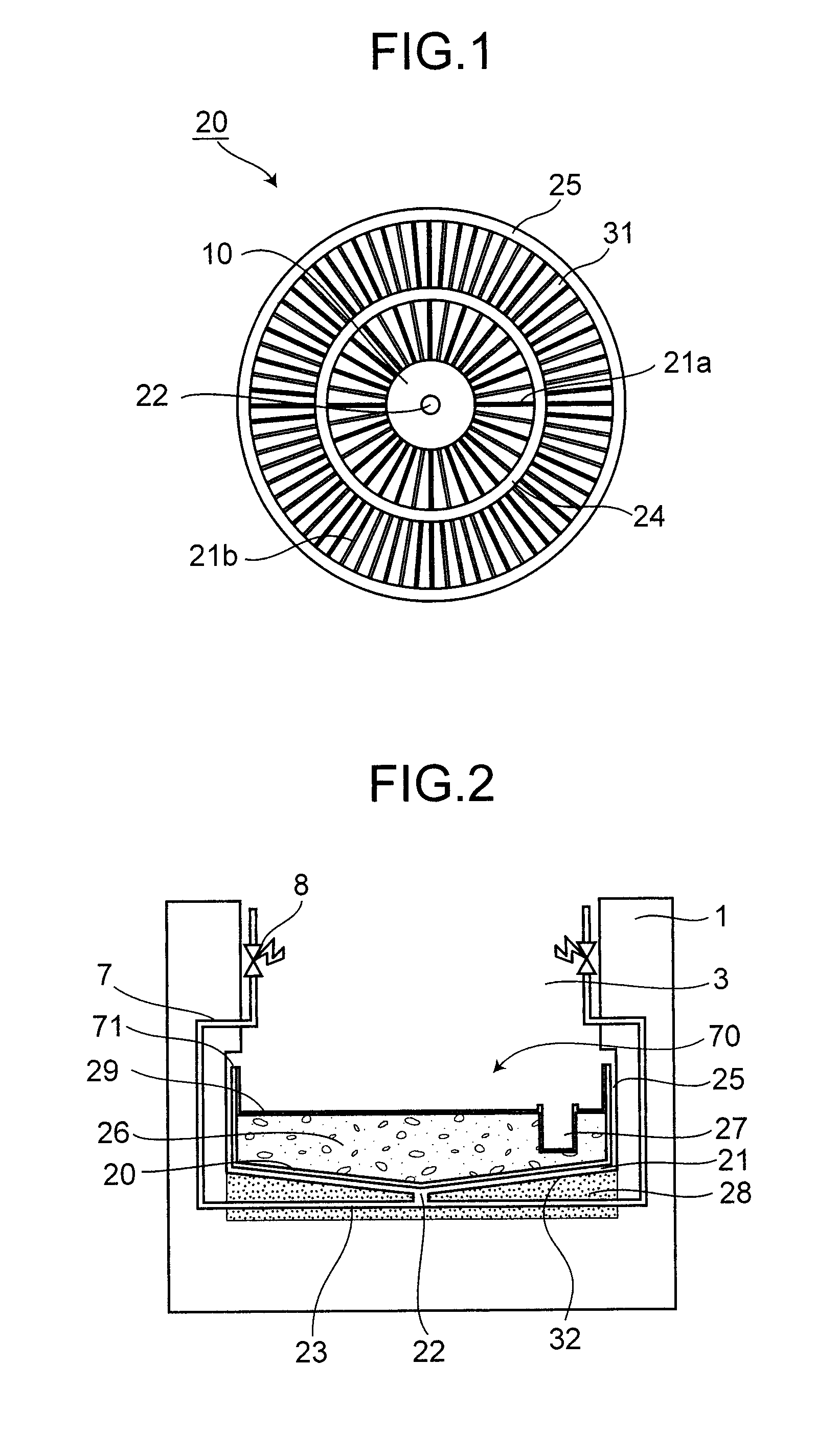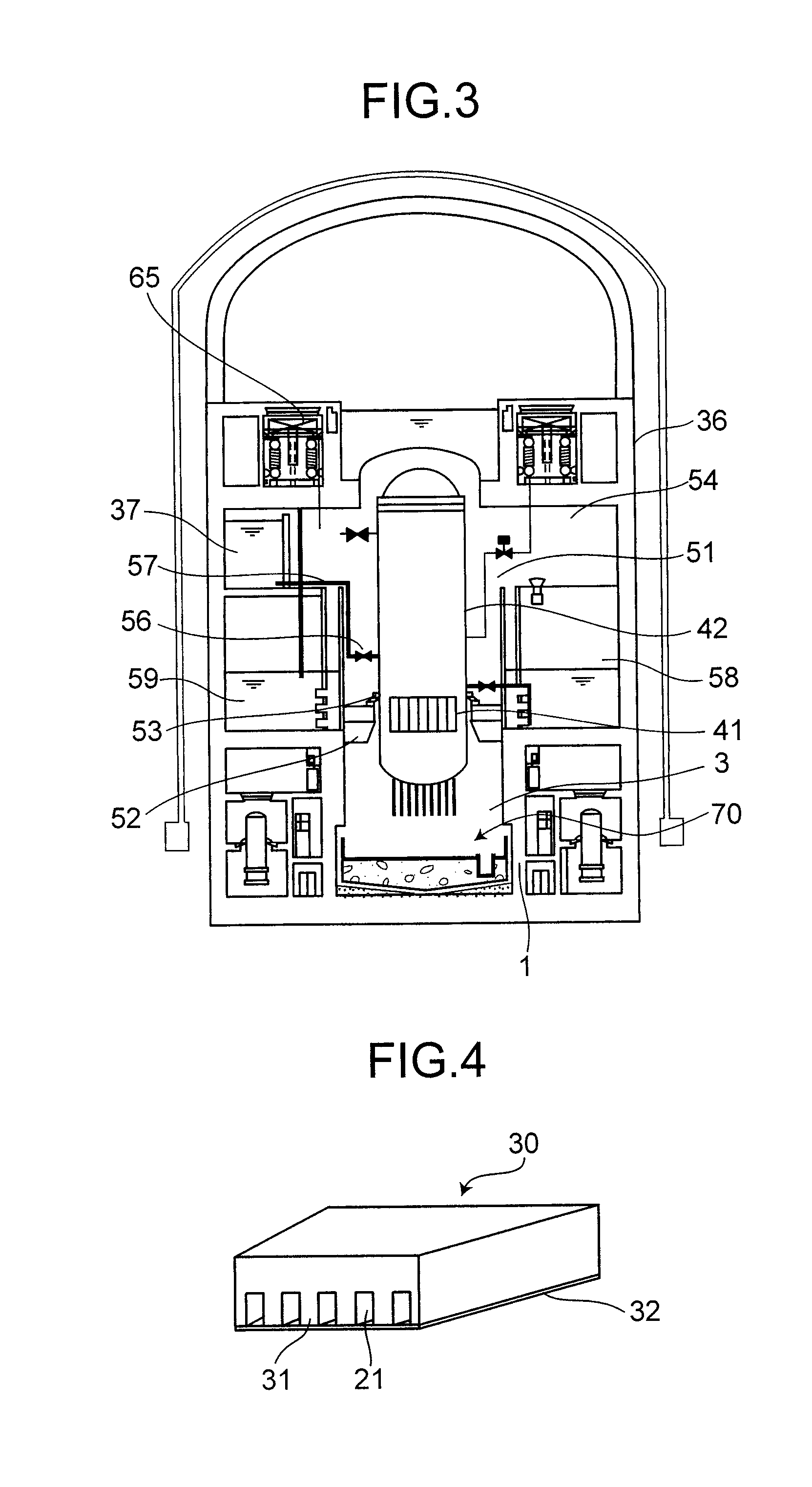Core catcher, manufacturing method thereof, reactor containment vessel and manufacturing method thereof
a manufacturing method and core catcher technology, applied in nuclear engineering problems, greenhouse gas reduction, nuclear elements, etc., can solve the problems of reactor core exposed above water level, insufficient cooling, and water level in the reactor falling,
- Summary
- Abstract
- Description
- Claims
- Application Information
AI Technical Summary
Benefits of technology
Problems solved by technology
Method used
Image
Examples
first embodiment
[0060]FIG. 3 is a vertical cross sectional view of a reactor containment vessel according to the first embodiment of the present invention.
[0061]Inside of a reactor containment vessel 36, there is a space called drywell 51. A reactor pressure vessel (RPV) 42 is installed in the drywell 51. The reactor pressure vessel 42 is fixed by RPV support 52 with an RPV skirt 53. Higher part of the drywell 51 than the RPV support 52 is called upper drywell 54 and lower part is called lower drywell 3. Wall surrounding the lower drywell 3 is called a pedestal side wall 1. In an ESBWR, the RPV support 52 is supported by the pedestal side wall 1.
[0062]A reactor core 41 is contained inside the reactor pressure vessel 42.
[0063]A gravity-driven cooling system (GDCS) pool 37 is installed in the upper drywell 54. The GDCS pool 37 and the reactor pressure vessel 42 are connected by piping 57 via a blast valve 56. A pressure suppression chamber 58 is located below the upper drywell 54 and surrounds the re...
second embodiment
[0095]A core catcher according to a second embodiment of the present invention uses subdivided body sub pieces 30 in combination for easy installation.
[0096]FIG. 4 is a perspective view of the body sub piece 30 and the base lid 32 according to the second embodiment. FIG. 5 is a bottom plan view of the body sub piece 30 according to the second embodiment.
[0097]The cooling fins 31 are formed on a bottom surface of the each body sub pieces 30. The base lid 32 having a same projection shape as the body sub piece 30 is attached to the bottom of the cooling fins 31. Spaces between the cooling fins 31 are the cooling channels 21 through which the cooling water flows.
[0098]The body sub pieces 30 and the cooling fins 31 integrated with the body sub pieces 30 are made of steel and thickness is about 18 cm in total, for example. Thickness of the base lid is about 2 cm and the thickness of whole of the body sub piece 30 is about 40 cm for example. The base lid 32 can be made of any material tha...
third embodiment
[0105]FIG. 8 is a vertical cross sectional view of a reactor containment vessel according to a third embodiment of the present invention.
[0106]A pedestal 115 is formed by a pedestal floor 107 located in the lower part and a surrounding pedestal side wall 124 of cylindrical shape in a reactor containment vessel 102. A reactor pressure vessel 101 containing a reactor core 123 is supported by the pedestal side wall 124.
[0107]A suppression pool 104 is surrounding the pedestal side wall 124 in a lower part of the reactor containment vessel 102. The suppression pool 104 stores water.
[0108]A molten core cooling device (core catcher) 130 is installed on the pedestal floor 107. Cooling water injection piping 108 is connected to the molten core cooling device 130. The cooling water injection piping 108 is connected to a cistern 105 located in an upper part of the reactor containment vessel 102 via an injection valve 114.
[0109]A cooling device 106 is allocated above the reactor containment ves...
PUM
 Login to View More
Login to View More Abstract
Description
Claims
Application Information
 Login to View More
Login to View More - R&D
- Intellectual Property
- Life Sciences
- Materials
- Tech Scout
- Unparalleled Data Quality
- Higher Quality Content
- 60% Fewer Hallucinations
Browse by: Latest US Patents, China's latest patents, Technical Efficacy Thesaurus, Application Domain, Technology Topic, Popular Technical Reports.
© 2025 PatSnap. All rights reserved.Legal|Privacy policy|Modern Slavery Act Transparency Statement|Sitemap|About US| Contact US: help@patsnap.com



